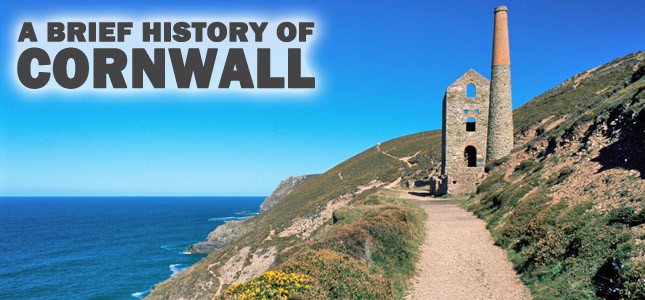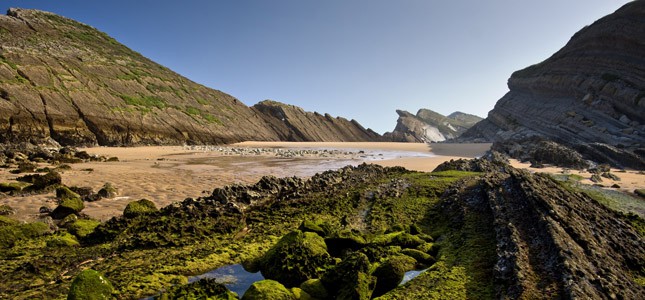A Brief History of Cornwall
Part 1 – Before Time Began
Ok, so realistically, there was no Cornwall, no anything, before time began; however it has been discovered that there was human activity in the area as long ago as 400,000 BC!
During the Paleolithic period (2,500,000BC-200,000BC), otherwise known as the Old or Early Stone Age, humans began inhabiting parts of the UK, coming from across Europe no doubt in search of new and fertile hunting grounds.

It is known that there were settlers in the UK during this time, however no human remains have been found in Cornwall from this period.
Whilst there is no evidence of settlers within the Cornwall peninsula, archaeologists have found remnants of simple chipped stone-fashioned tools that would have been used for hunting… although probably not dinosaurs!
The first evidence of people settling in Cornwall dates from the Mesolithic period (approx.20,000BC-approx.3,500BC) and radiocarbon dating performed on artifacts discovered here, has confirmed that two sites, at Poldowrian, and Windmill Farm, both on the Lizard peninsula, were actively populated during this time. The inhabitants of this time have become known as the ‘Beaker People’, due to the fact that they brought a new type of pottery vessel along with them, which they buried alongside their dead. They were very much ‘hunter-gatherer’ types, scouring and foraging the land far and wide, for morsels to bring back to the homestead.

The Neolithic, or New Stone Age, period began circa.3,500BC, signaling the final stage of prehistoric cultural development. This was largely characterised by the development of stone tools, which were more advanced than their ‘chipped stone’ predecessors, and were formed into shape by polishing and grinding the stones and attaching handles to the finished articles to make far more effective hunting weapons…this time perhaps for hunting dinosaurs, but only small ones! Also, other skills and crafts were beginning to be developed, such as pottery and weaving. Stone Age man (and woman) was starting to use his/her brain!
During this time, serious construction was also underway. Large tombs, known as ‘dolmen’ or ‘cromlechs‘ were beginning to be built, along with other structures such as ‘menhirs’ (standing stone structures) and ‘quoits’ (stone circles). Many of these structures still stand today, with examples to be found in places such as Trethevy Quoit, widely considered to be the best preserved example of a prehistoric stone quoit in Cornwall, and at Duloe, near Polperro.
If Cornwall’s pre-history fascinates you, there are many sites of historical interest scattered throughout the County just waiting for your visit; for further information on potential sites of interest, and to book your holiday cottage in Cornwall, give the team at Toad Hall a call, they can point you in the right direction for an educational and informative visit.
